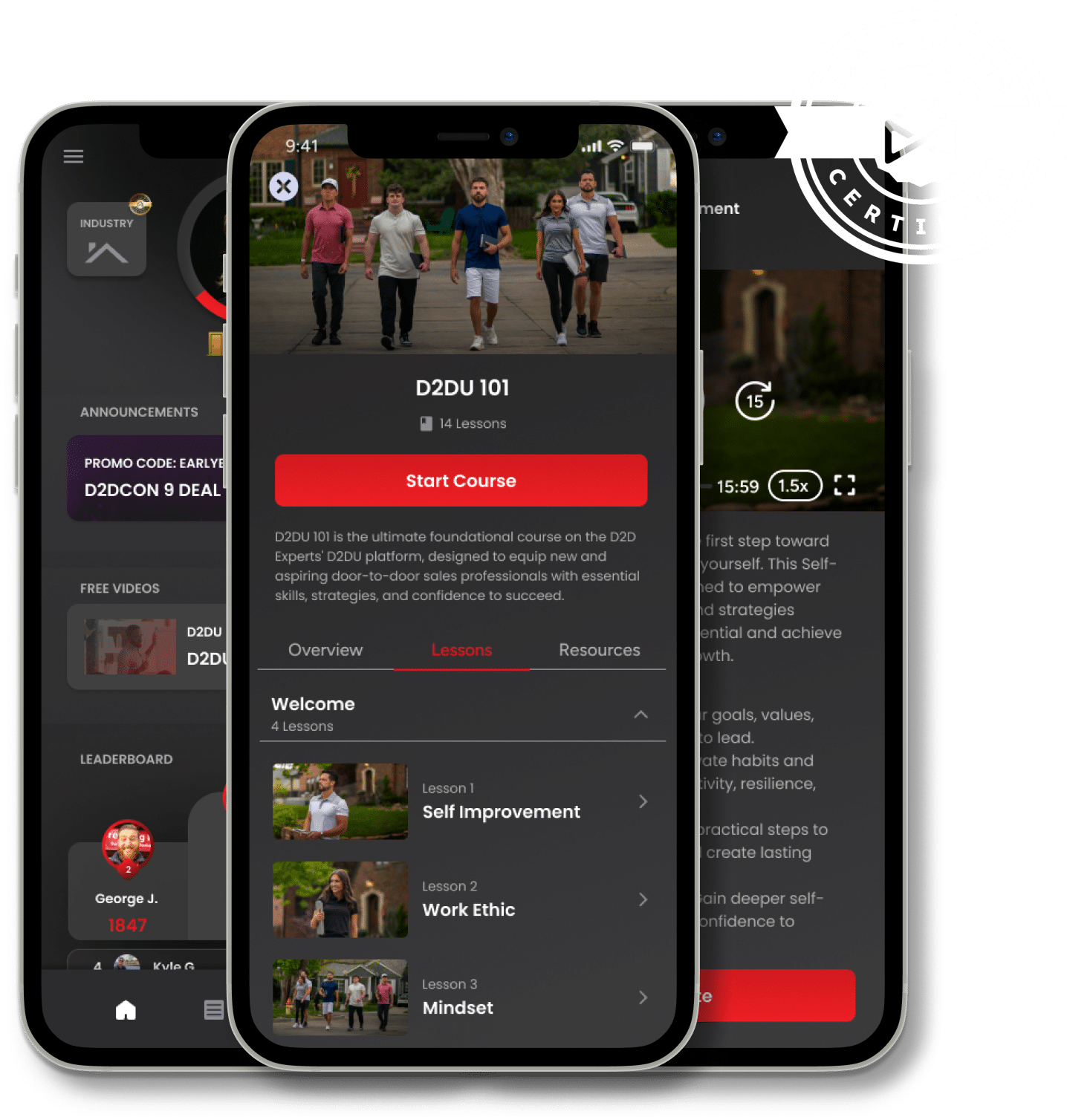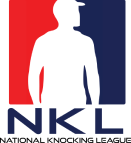Sam Taggart here – The force behind D2D Experts and your partner in all things sales.
From my early days selling as an 11-year-old, I’ve now clocked in 17 years mastering the art of sales, turning it into a ladder to success. Today, I’ve built a 7-figure consulting empire, pioneering and enhancing door-to-door programs for over 150 businesses nationwide. Having pitched everything from window cleaners to vacuums, my renewed mission is to infuse honor and integrity into the D2D industry.
Unlock the 4 S Sales Framework!
Learn Sam Taggart's Proven Pitch Method with D2D University.

Here, I’ve shared a few golden nuggets:
- Crafting the perfect sales pitch
- Breaking the preoccupation with sales
- Structuring sales presentations for maximum impact
- Innovating and personalizing your sales pitch for diverse products.
Check out the podcast below, or keep scrolling for a detailed overview:
As a consultant for various companies, I specialize in training sales professionals on how they can structure effective sales presentations.
I worked with a team in Florida to refine their sales pitch a while ago.
What struck me about this team was their reliance on a generic pitch, seemingly borrowed from others in the industry. It will lose effectiveness if you’re the tenth person using the same pitch. It’s crucial to innovate and develop a fresh approach.
My strategy for that is the time-tested “four S’s” framework.
I don’t care if you’re selling window cleaners or vacuums.
A simple formula can help you figure out your what and why.
Naturally, you start with an introduction, resolve any initial reservations, and address them head-on. After setting the stage, it’s time to cover the essence of your program in detail.
Here are the 4 S of crafting the perfect sales pitch:
1-Situation
First and foremost, it’s essential to grasp the situation at hand when you’re at the door. What’s the context you’re walking into? Consider the following:
- Is the person in a hurry or engaged in something?
- Have they previously engaged with a similar service or product?
- Are they familiar with your offering, or is this their first introduction?
- Are they currently satisfied with a competitor’s offering or looking for something new?
For instance, if you’re speaking to someone already using a similar service, your approach should be different than introducing a first-time user to the product. Using the same pitch for every door will not work.
It’s not about having a standard script; it’s about understanding the individual’s unique situation and tailoring your pitch accordingly. If you rely solely on a generic pitch, you miss out on genuinely connecting with the person and addressing their needs.
In essence, the situation dictates the approach. And remember, every door presents a new situation, so flexibility and adaptability are key. Instead of seeking the perfect words, focus on understanding the situation and crafting a resonating sales pitch.
2-Saturation
The second crucial important factor to consider is market saturation. Have you or your competitors already approached this particular neighborhood or individual? Always develop a thorough understanding of the level of familiarity the person has with your offering or similar ones.
If you’re in an area where residents have already interacted with other representatives from your industry, your approach should acknowledge that. For instance, you might say, “I understand you might have spoken to a few representatives about this. That’s precisely why I’m here – to offer a fresh perspective and address any lingering questions.”
But, if you’re targeting fresh ground where your product or service is a novelty, acknowledging saturation would be out of place. In such cases, approach with the excitement of introducing something new. For instance, “I’m excited to share something innovative with you that I believe could be of great benefit.”
Gauging market saturation helps you tailor your sales pitch to build on prior interactions or introduce a fresh concept. It’s about meeting people where they are and guiding them forward.
3-Sex
The third major factor is understanding your audience’s demographics. We are not just talking about gender but age, ethnicity, and other defining characteristics. Recognizing these factors can heavily influence your pitch’s success.
For instance, presenting your product or service to a 70-year-old retiree will likely differ from how you’d approach a young family who’s just moved into their first home.
Each demographic has unique needs, preferences, and pain points.
An elderly individual would perhaps value reliability, longevity, and ease of use. On the other hand, a young family might prioritize safety, efficiency, and cost-effectiveness.
Cultural nuances can also play a role. Understanding and respecting these differences ensures your pitch resonates more deeply with the individual and helps them feel seen and understood.
Tailoring your approach based on demographics isn’t about making assumptions but about being adaptable and empathetic to align your product or service with the specific needs and values of the person you’re speaking to.
4-Status
By ‘status,’ I’m referring to their socio-economic standing, whether they belong to a higher or lower income bracket. It’s also about recognizing who holds the decision-making power in the household.
Quick questions like the following can help you gauge this:
- Are you the homeowner?
- How long have you lived here?
- Is it just you and your spouse living here?
- Who typically handles the bills?
These inquiries guide your approach. For instance, if you realize they aren’t the primary decision-maker, your strategy should shift towards engaging the person who is. Ignoring these nuances, which I call the ‘Four S’s,’ can reduce your effectiveness at the door.
Without a tailored approach like this, you risk appearing generic or out of touch with the customer’s unique situation.
Let’s break down a real-world scenario to help you understand the importance of a tailored sales approach.
Situation: You’re introducing a brand-new product in a new, upscale neighborhood.
Saturation: It’s a fresh market; no one has ever approached these residents with your product.
Appointmentgraphic: Your target is a 70-year-old gentleman, well-off, living in a luxurious setting.
Status: He’s affluent, retired, and lives alone.
Product: For this example, let’s say you’re selling an eraser, but remember, the product could be anything.
Given these specifics, here’s how you could potentially approach this:
Acknowledging Status
“Good afternoon, sir. I hope I’m not intruding. I represent Office Depot, and I’m here to introduce a unique product that I believe could be of value to you. I understand that door-to-door sales can sometimes be bothersome, especially in a peaceful neighborhood. I promise to be brief and respectful of your time.”
This approach acknowledges the customer’s status and the environment, ensuring the pitch is respectful, concise, and tailored to the individual’s unique situation. It’s all about resonating with the customer and making a genuine connection.
Setting the Context
“Many homes and motors in here still have chalkboards. By the way, I love the neighborhood.”
Introducing the ‘Why’
“Many residents have upgraded from traditional chalkboards to modern whiteboards but forgot the erasers. However, what’s a whiteboard without a quality eraser?”
Presenting the Program:
“Our initiative is simple: we want to ensure that as homes in this area evolve, no detail, however small, is left behind.”
Remember, you’re not just selling an eraser but understanding the customer, acknowledging their status, and presenting a solution that fits into their lifestyle. It’s about making them feel seen, understood, and valued.
5- Salesman (Stepping into the role)
If you can sense that the prospect is curious enough to know more, it is time to step into the role of a salesman.
Let’s break this stage down:
The Offer
“We have a special promotion running currently. Until the end of this week, we’re offering a two-for-one deal. Purchase one eraser, and you’ll receive a second one at no additional cost.”
Setting Expectations
“Our eraser might not be the ideal fit for everyone. Preferences vary; some prefer a softer texture, and others lean towards the firmer ones. We want to ensure that our product aligns with your needs.”
Transition
“Now, let’s delve deeper. Do you have any dry-erase surfaces I can demonstrate this on? I’d love to show you firsthand how effective our product is. I’ll give you a quick demo with your permission.”
That’s why I could pick up something random and show you the steps of my door approach. And it will work in whatever I’m selling. It’s funny.
Unlock the 4 S Sales Framework!
Learn Sam Taggart's Proven Pitch Method with D2D University.

The Universal Sales Approach: From Bounce Houses to Beyond
I once did a unique challenge for a YouTube series titled ‘Will It Sell?’.
The product? Bounce houses.
Despite being in North Carolina and having no actual bounce houses to sell, I decided to give it a shot using images from Google with a simple goal: “Test the universality of my sales approach.”
Surprisingly, the same sales process I applied to other products worked seamlessly for bounce houses.
I’ve realized that following our structures and training can make you an expert in whatever you’re selling.
We have a whole university to teach you and break down the little steps.
If you’re eager to perfect your pitch and master the art of sales, schedule a demo with us. Dive deep into our content; share it with others if it resonates with you.
Or, if you prefer face-to-face learning, don’t miss the upcoming D2DCon 7. It promises to be an enriching experience filled with insights, workshops, and opportunities to learn from the best in the business.
Did you enjoy the piece, and are you ready to learn more? Well, there’s more about where that came from here.
I knocked doors since I was 11! Never bought into the whole hourly normal job, and used direct sales to be the vehicle to create MASSIVE success. I Started the Direct Sales division for Solcius as their VP building it up to have 70+ sales reps nation wide. In 2018 I left to pursue a greater mission to unify and uplevel the Door to Door industry and founded the D2D Experts.
























